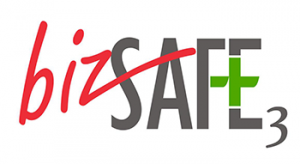WHY STAKEHOLDER ENGAGEMENT IS IMPORTANT
Consistently in the course of business, stakeholder engagement remains an important factor in order to respond to legitimate stakeholder concerns, mitigate risks and even in defining future strategy; and it requires the company to have excellent communication with its stakeholders.
Common Key Stakeholder Groups
Stakeholders are people who affect or are affected by a certain effort, and can include employees, local communities, customers, investors, and suppliers. These individuals may also have a powerful concern for reasons that are political, academic, or philosophical. They possess these interests even if their colleagues, families, or acquaintances are not affected directly by the said effort. One classification of stakeholders is by their connection to the effort in point:
- Primary stakeholders. These are groups or individuals that can be directly affected negatively or positively by a certain task initiated by the institution, organisation, or agency. These include employees, investors, partners and government.
- Secondary stakeholders. The individuals here are those who are affected indirectly (negatively or positively) by the actions of the company. These include supplier, vendors, competition, media and government.
- Key stakeholders. People under this group are either or neither primary or secondary stakeholders, but can have a negative or positive effect on efforts e.g. a local community.
Understanding Stakeholders

- Modelling
- Formal workshops on brainstorming
- Prototyping
- Visualizations and simulations
- Questionnaires and interviews
- Review of analysis outcomes
Benefits of Engaging Stakeholders
- Organizations do not always have all the answers, yet are often expected to satisfy stakeholders’ requirements. Companies should always be open to having good connections with their stakeholders because in doing so, there is learning from stakeholders’ opinions, skills, experiences, and ideas. Once this happens, management can introduce enhancements within the system through the creation of new policies and enhanced procedures.
- More and more stakeholders such as customers and employees want to have a say in how they want to be serviced/managed. Hearing stakeholders out is necessary because it facilitates better collaboration. Through open and constant dialogue, stakeholders become more relaxed in voicing their concerns or ideas, and candid feedback can be obtained.
- Stakeholders’ consultation can lead to better policies, products, and services. When stakeholders are involved in writing, testing, and reviewing plans, they feel more involved in the company’s onward movement. Their involvement within the organization allows them to know what to expect during any disruption or emergency. As a result, they are highly likely to make several recommendations that will lead to the company’s improvement.

Facilitating Stakeholder Engagement
The following are the main principles in stakeholder engagement:
- Interact. It is vital to understand the individuals you work with before you aim to influence and engage them.
- Consult regularly and early. Stakeholders may find the early stages of the project unclear. It is vital to ensure that the needs are agreed upon and the presented solution is acceptable to most of the stakeholders.
- Plan. Stakeholder engagement should be approached conscientiously. Only then will the benefits come.
- Develop relationships. Doing so creates and enhances trust.
- Negotiation. Determine the most agreeable baseline despite stakeholders’ deviating priorities and expectations.
- Be responsible. Engaging stakeholders is a team effort. Members should comprehend their roles and stay on the right path when it comes to engagement and communication.
Apply Process Facilitation Techniques That Are Tried and Tested
Below are some facilitation techniques that can make a meeting with stakeholders participatory, thoughtful, enjoyable, and cohesive:
- Check-in first. This makes the participants concentrate on each other and on the meeting.
- Review the agenda and desired results. Every person in the meeting should know what the results should be—the accomplishment of the meeting’s objective.
- Designate the roles during the meeting. This creates collective responsibility in making the meeting successful.
- Reflect. When the main subject of the meeting has surfaced, the facilitator should provide some time for reflection. This identifies the issues and possible questions without being influenced by the opinions of others.
- Take breaks. Do this when the energy in the room seems low and restless.
- Establish a conclusion. By the meeting’s end, make sure that every task, decision, and future endeavours are well-documented for follow through.

Pitfalls to Avoid in Facilitating a Stakeholder Engagement
Always remember that stakeholders matter. They should always be involved in the projects when it comes to providing support and input. Here are some of the common pitfalls you should avoid during stakeholders’ engagement:
- Being drawn to similar people. Managers should never limit themselves to connecting only to people who always say yes to them. This is always dangerous and will always make the endeavour veer in the wrong way.
- Avoid clashes. It is natural for people to avoid those who disagree with them. As a result, they tend to discount, bypass, or marginalise these people. When managers encounter such people, they tag them as hindrances to growth.
- Indulging authority. People reaching out to stakeholders have less formal power than the stakeholders. Managers are always inclined to sugar coat or water down things so that the more powerful can hear the things they desire to hear. This affects priorities in the project.
- No time to engage. It seems that managers always say that they don’t have enough time to engage stakeholders. Just assuming what stakeholders want can cause headaches later on.
- Selfish intentions. Managers should think of the greater good of the company by coordinating differences instead of just getting their own way.
Conclusion
When it comes to engaging stakeholders, always remember the following:
- All stakeholders should be heard in making decisions that interest them.
- Stakeholders can determine project outcomes.
- Being affected is not the same as being involved.
- Always seek information in an active manner.
- Engage the stakeholders first and the rest will follow.
Need help with engaging your stakeholders?
Contact us at admin@fns.sg to find out how we can help you with your stakeholder engagement or how we can equip you with stakeholder engagement facilitation skills.




